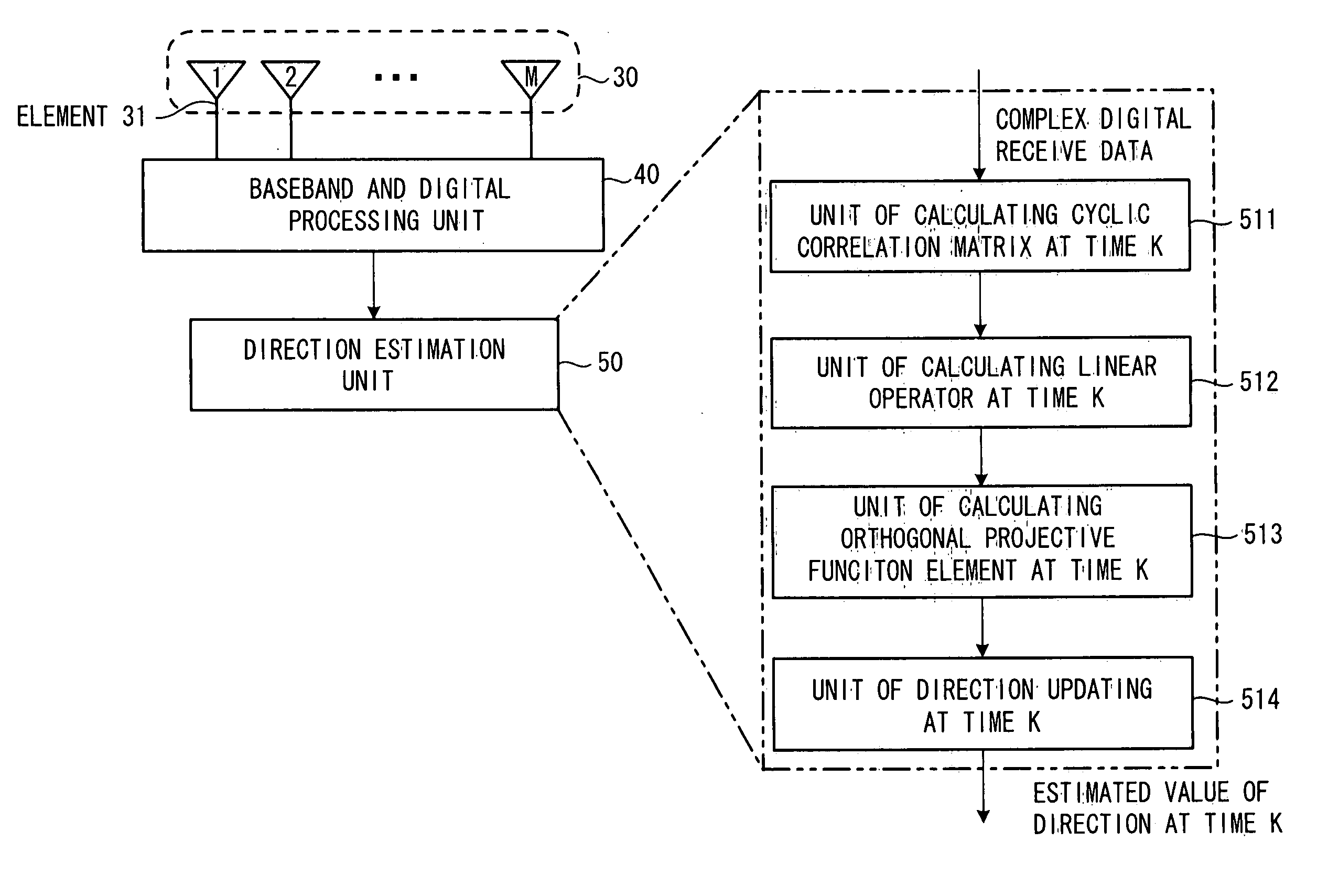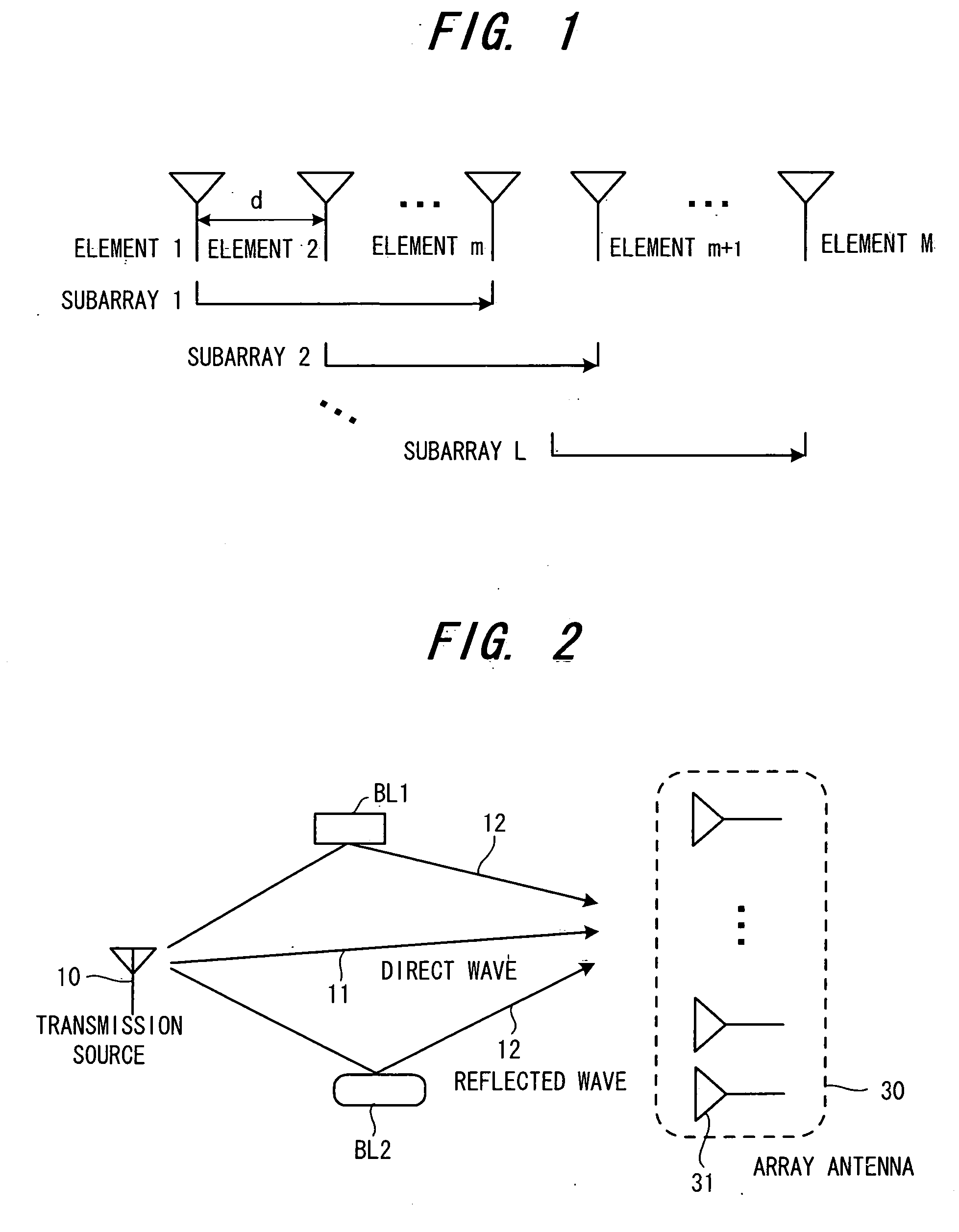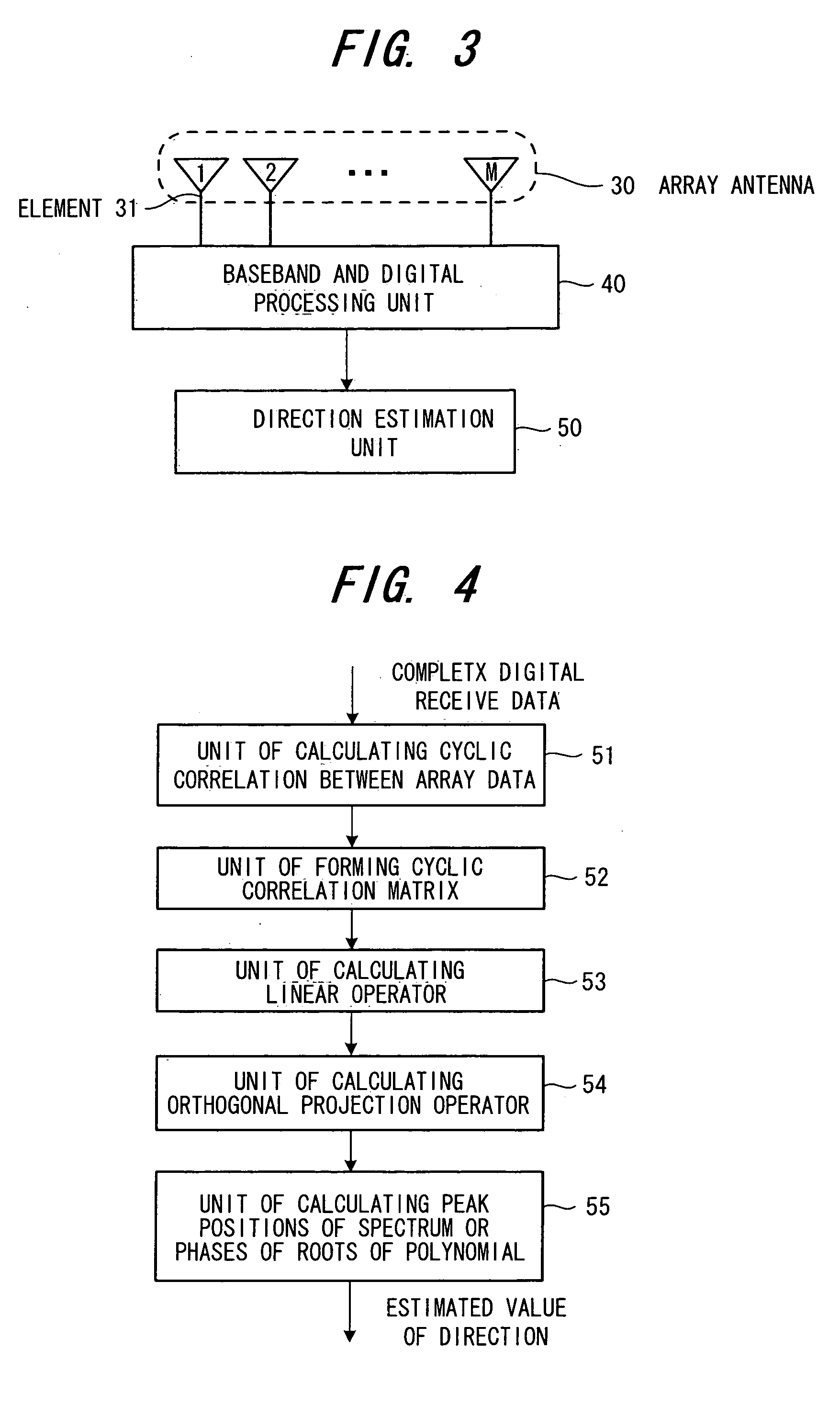Method and device for tracking the directions-of-arrival of radio waves
a radio wave and direction-of-arrival technology, applied in direction finders using radio waves, multi-channel direction-finding systems using radio waves, instruments, etc., can solve problems such as the performance degradation of the receive and transmission systems of the base station, and achieve the effect of reducing the computational load
- Summary
- Abstract
- Description
- Claims
- Application Information
AI Technical Summary
Benefits of technology
Problems solved by technology
Method used
Image
Examples
first embodiment (
(A) First Embodiment (Constant Directions)
[0038] The first embodiment is a method and device for estimating the constant directions of coherent cyclostationary signals accurately and the first embodiment will be described with reference to the drawings. In the following drawings, composing elements which are roughly identical or have the same function are denoted with a same reference symbol.
[0039]FIG. 1 is a diagram depicting an array antenna, where M antenna elements are linearly placed with the adjacent spacing of d. FIG. 2 is a diagram depicting the the transmission source 10 and the array antenna 30 at the base station. The array antenna 30 has the same configuration as that shown in FIG. 1 and constitutes the direction estimation system. In FIG. 2, the direct wave 11 impinges straightly from the transmission source 10 on the array antenna 30, and the reflected wave 12 impinges the array antenna 30 after being reflected by the buildings BL1 and BL2. In FIG. 2, two reflected wa...
second embodiment
(B) Second Embodiment
[0059] The direction estimation unit 50 of the first embodiment (FIG. 3) can estimate the directions of the cyclostationary signal without eigendecomposition. The first embodiment, however, can be applied only when the directions of incident signals are constant. If the direction of an incident signal varies over time, the estimation method of the first embodiment should be modified as an online algorithm so that the time-varying direction can be accurately estimated.
[0060]FIG. 8 is a diagram depicting the configuration of the direction estimation unit 50 when the direction of the incident signal varies over time. Now the procedure for tracking the directions of the cyclostationary signals will be described.
[0061] First the unit 511 of calculating the cyclic correlation matrix at time K recursively calculates the cyclic correlation matrices Ψf (K, τ) and Ψb (K, τ) at time K by the following expressions
Ψf(K,τ)=μΨf(K−1,τ)+Xf(K−τ)xM*(K)e−j2xα(K−τ) (19a)
Ψb(K,τ)...
third embodiment
(C) Third Embodiment
[0074] Receiver at Base Station
[0075] A base station receiver can be constructed by a device for estimating the direction of cyclostationary signals and beamforming means for forming the receiving beam-pattern so that its peak turns towards the estimated directions obtained by the device for estimating the direction.
[0076]FIG. 11 is a diagram depicting the configuration of this receiver of base station. The array antenna 30 receives signals and inputs them into the baseband and digital processing unit 40. The digital processing unit 40 processes the signals for each antenna element and outputs the complex digital received data. The direction estimation unit 50 estimates the directions of the coherent signals by using the received array data. The beamforming unit (receiving beamformer) 60 forms a beam, where the beam peak is in the estimated direction obtained by the direction estimation unit 50. In other words, the beamforming unit 60 extracts the desired signa...
PUM
 Login to View More
Login to View More Abstract
Description
Claims
Application Information
 Login to View More
Login to View More - R&D
- Intellectual Property
- Life Sciences
- Materials
- Tech Scout
- Unparalleled Data Quality
- Higher Quality Content
- 60% Fewer Hallucinations
Browse by: Latest US Patents, China's latest patents, Technical Efficacy Thesaurus, Application Domain, Technology Topic, Popular Technical Reports.
© 2025 PatSnap. All rights reserved.Legal|Privacy policy|Modern Slavery Act Transparency Statement|Sitemap|About US| Contact US: help@patsnap.com



